
Flagler County is a county located in the northeastern portion of the U.S. state of Florida. As of the 2020 census, the population was 115,378. Its county seat is Bunnell, and the largest city is Palm Coast. Created in 1917 from portions of Saint Johns and Volusia Counties, it was named for Henry Flagler, who built the Florida East Coast Railway.

St. Johns County is a county in the northeastern part of the U.S. state of Florida. As of the 2020 United States census, its population was 273,425. The county seat and most populous incorporated city is St. Augustine, although the nearby community, St. Johns, has a higher population. St. Johns County is part of the Jacksonville, Florida Metropolitan Statistical Area.

Hobe Sound is an unincorporated area and census-designated place (CDP) in Martin County, Florida, United States, located along Florida's Treasure Coast. The population was 13,163 at the 2020 census, up from 11,521 in 2010.

Palm City is an unincorporated area and census-designated place (CDP) in Martin County, Florida, United States. The population was 25,883 at the 2020 census. It is part of the Port St. Lucie Metropolitan Statistical Area.

Golden Beach is a town in Miami-Dade County, Florida, United States, between the Intracoastal Waterway and Atlantic Ocean. The town is part of the Miami metropolitan area of South Florida. As of the 2020 US census, the town had a population of 961.

Sunny Isles Beach is a city located on a barrier island in northeast Miami-Dade County, Florida, United States. The city is part of the Miami metropolitan area of South Florida, and is bounded by the Atlantic Ocean on the east and the Intracoastal Waterway on the west. As of the 2020 census, it had a population of 22,342.

Butler Beach is a census-designated place (CDP) in St. Johns County, Florida, United States. The population was 4,978 at the time of the 2020 United States Census, up from 4,951 at the 2010 census. It is part of the Jacksonville, Florida Metropolitan Statistical Area. Established by Frank B. Butler, who had been successful operating a grocery store and became a political activist, it was a resort for African Americans. The Lincolnville businessman bought land in the area between the Atlantic Ocean and the Matanzas River, and offered beach access to African Americans. It was the only beach open to them between Jacksonville and Daytona Beach.
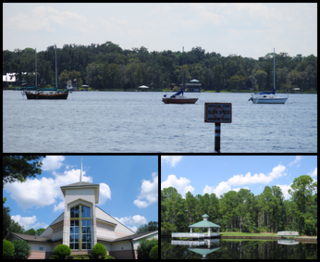
Fruit Cove is a census-designated place (CDP) in St. Johns County, Florida, United States. It is located in the community of St. Johns. The population was 32,143 at the 2020 census, up from 29,362 at the 2010 census. It is part of the Jacksonville, Florida Metropolitan Statistical Area.

Sawgrass is a census-designated place (CDP) in St. Johns County, Florida, United States. The population was 5,385 at the 2020 census, up from 4,880 at the 2010 census. The area is located in Ponte Vedra Beach and part of the Jacksonville, Florida Metropolitan Statistical Area. Sawgrass is home to The Players Championship (TPC), established in 1974. The tournament offers the highest prize fund of any tournament in golf.
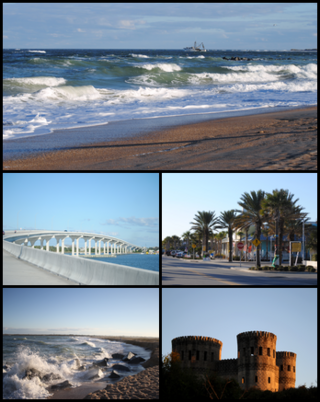
Vilano Beach is an unincorporated community and census-designated place (CDP) and in St. Johns County, Florida, United States. It was listed as the Villano Beach CDP by the U.S. Census Bureau from 2010 to 1990; however, the name was corrected to Vilano Beach for the 2020 census. The population was 2,514 at the 2020 census, down from 2,678 at the 2010 census. It is part of the Jacksonville, Florida Metropolitan Statistical Area.

St. Augustine Beach is a city in St. Johns County, Florida, United States. The population was 6,803 at the 2020 US census, up from 6,176 at the 2010 census. It is part of the Jacksonville, Florida Metropolitan Statistical Area.
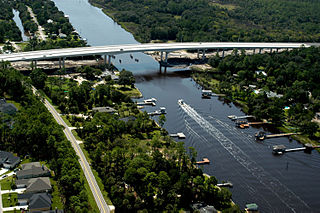
Ponte Vedra Beach is a wealthy unincorporated community and suburb of Jacksonville, Florida in St. Johns County, Florida, United States. Located 18 miles (29 km) southeast of downtown Jacksonville and 26 miles (42 km) north of St. Augustine, it is part of the Jacksonville Beaches area, and on the island nicknamed San Pablo Island.
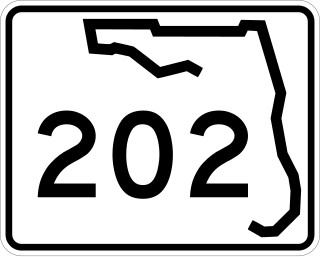
State Road 202 (SR 202) is a 13.042-mile-long (20.989 km) state highway that extends from U.S. Route 1, in Jacksonville, Florida to SR A1A, in Jacksonville Beach, near the Atlantic Ocean, just north of Ponte Vedra Beach, and includes a bridge over the Intracoastal Waterway. To locals, the road is better known as J. Turner Butler Boulevard, Butler Boulevard, or JTB. Despite being named as a boulevard, the road is a completely limited-access expressway, with the exception of the westernmost 0.5 miles between US 1 and Interstate 95 (I-95),. It was constructed in sections by the Jacksonville Transportation Authority. The first section opened in 1979, but the entire road was not completed until 1997.

The Palm Valley Bridge spans the Intracoastal Waterway in the Palm Valley area near Ponte Vedra Beach, Florida. It is located on County Road 210 in St. Johns County. In 2002, the old two-lane drawbridge was replaced with a fixed, clear span, four-lane bridge. Ground-breaking was in December 2000 and the official ribbon cutting ceremony was held in July 2002. The Palm Valley Bridge was built due to increasing traffic on the bridge and population growth in the area.
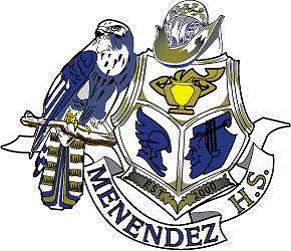
Pedro Menendez High School is a public high school in the St. Johns County School District, located in southern St. Johns County, Florida, United States. It was named for Pedro Menéndez de Avilés, a sixteenth-century Spanish admiral and pirate hunter who founded St. Augustine, the first permanent European settlement and oldest port city in what is now the continental United States, on August 28, 1565.
Fleming Island is an unincorporated community and census-designated place (CDP) in Clay County, Florida, United States. It is located 21 miles (34 km) southwest of downtown Jacksonville, on the western side of the St. Johns River, off US 17. As of the 2020 census the Fleming Island CDP had a population of 29,142, up from 27,126 at the 2010 census. It is part of the Jacksonville, Florida Metropolitan Statistical Area. Fleming Island's ZIP code became 32003 in 2004, giving it a different code from Orange Park, the incorporated town to the north.

Allen D. Nease High School is a high school in the St. Johns County School District, located in the Nocatee census-designated place, in St. Johns County, Florida. It is a part of the St. Johns County School District.

Nocatee is an unincorporated planned community and census-designated place (CDP) located primarily in northern St. Johns County, Florida. The population was 22,503 at the 2020 census, up from 4,524 at the 2010 census, an increase of nearly 400%. It is part of the Jacksonville, Florida Metropolitan Statistical Area. As of 2020, the community consists of twenty-two neighborhoods, some of which are specialized for certain age groups. The community blends a variety of neighborhoods with schools, parks, recreation, offices, shopping, and restaurants. Part of the development lies within Jacksonville city limits in Duval County, although the CDP lies entirely within St. Johns County. It is near Ponte Vedra Beach in Florida's First Coast region and sits on 13,323 acres (5,392 ha) of land. It was approved in 2001 as a Development of Regional Impact (DRI) under Section 380.06 of the Florida Statutes.

Ponte Vedra High School (PVHS) is a public high school in the St. Johns County School District, located in Nocatee census-designated place, northeast St. Johns County, Florida. The high school was constructed to relieve overcrowding at Allen D. Nease High School.

The Jacksonville Beaches, or Jax Beaches known locally as "The Beaches", are a group of towns and communities on the northern half of an unnamed barrier island on the US state of Florida's First Coast, all of which are excluded cities or parts of the city of Jacksonville itself. These communities are separated from the main body of the city of Jacksonville by the Intracoastal Waterway. The Jacksonville Beaches are located in Duval and northern St. Johns County counties, and make up part of the Jacksonville metropolitan area. The main communities generally identified as part of the Beaches are Mayport, Atlantic Beach, Neptune Beach, Jacksonville Beach, and Ponte Vedra Beach.


















